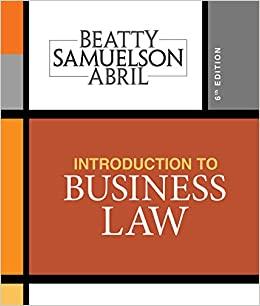Question
MICROECONOMICS Hi Prof, Previously the question and answer are as follows. They are correct. But there is a FOLLOW UP question that I want you
MICROECONOMICS
Hi Prof, Previously the question and answer are as follows. They are correct. But there is a FOLLOW UP question that I want you to answer. Then, explain to me please step by step for my learning. Thank you.
Question
Your mother owns and runs an arts and craft store, and the business is doing well. She would have otherwise been employed as a high school geography teacher making $80,000 a year or as an interior decorator making $68,000 a year. She owns the building in which her shop is located, which she could have rented out for $24,000 a year. Her annual revenue from the shop is $430,000 and she employs four workers, each of whom earns $30,000 a year. On average, she spends $206,000 per year traveling, purchasing, and shipping unique merchandise for resale at her store. Based on this information, do you think you should encourage her to return to teaching? Explain your advice with the help of calculations on her opportunity costs, accounting profit, and economic profit.
Answer
Total annual revenue=$430000
Now we estimate the economic costs namely explicit cost and implicit cost.
Explicit cost includes accounting costs. So,
Explicit Cost=4*30000+206000=$326000
Implicit Costs include the opportunity costs.
In this case one of the opportunity cost is salary that could have been earned. We have two alternatives. Opportunity cost is the amount of best forgone alternative. Since forgone salary is higher in case of teacher. We should take the amount of foregone salry as $80000.
So,
Implicit Cost=Foregone salary + Foregone rent=80000+24000=$104000
Accounting Profit=Total Revenue-Explicit Cost=430000-326000=$104000
Economic Profit=Total Revenue-Explicit Cost-Implicit Cost
Economic Profit=430000-326000-104000=0
We observe that she is making a positive accounting profit but zero economic profit.
Zero economic profit means that she should be indifferent between store and teaching job.
In case no uncertainty is there about revenue in future, she can choose either option. But if accounting profit is likely to fall in future, she should take the job of teacher. At the same time, if accounting profit is likely to increase, she may decide to continue to do the current business.
We have not considered the level of satisfaction (utility) she obtains from business or job. If she gets more satisfaction in business, she should continue it as current economic profit is zero. If she gets more satisfaction in teaching, she should go for teaching as current economic profit is zero.
FOLLOW UP QUESTION
One interesting angle is sacrificing short run gain for larger long run gain. It does hold validity to many business-people who often do not see much profit during their first few years of operation. However, during this time they are investing and building the business, so they incur a lot of expenses which negate the profit margin. Eventually, they begin to achieve the economies of scale and draw decent profits in the medium to short term. If this is her thinking, then it is a logical one.
However,
what income do you think she would have to make in another job in order to even consider closing the store at this time? Explain with economics.
Step by Step Solution
There are 3 Steps involved in it
Step: 1

Get Instant Access to Expert-Tailored Solutions
See step-by-step solutions with expert insights and AI powered tools for academic success
Step: 2

Step: 3

Ace Your Homework with AI
Get the answers you need in no time with our AI-driven, step-by-step assistance
Get Started


